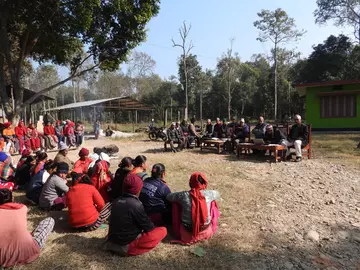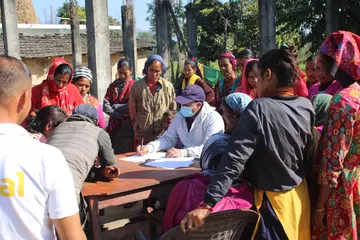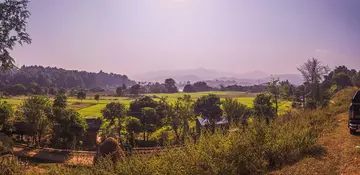
ZSL
Zoological Society of London
Working with local communities is essential to tiger conservation
Community engagement is fundamental to sustainable conservation. Wildlife recovery will only succeed when people are the part of the solution – which is why our team in Nepal and India have spent the best part of the past decade working closely with communities as part of our work to safeguard the region’s Critically Endangered tigers. Working in the Terai Arc Landscape region – an area covering the lowlands and foothills across Nepal and northern India - under the transboundary Integrated Tiger Habitat Conservation Programme (ITHCP), ZSL and partners ensure community members are at the heart of project planning, design and implementation.
As a keystone species, rebuilding the tiger population plays a vital role in restoring the region’s ecosystems. Tiger numbers at project sites have tripled from 89 in 2014 to 260 today, and as we reach the end of Phase II of the ITHCP project, this success wouldn’t have been possible without the contributions of the community members living alongside tigers.

Putting people at the heart of conservation
Local communities have been central to our conservation efforts from the start. ITHCP Phase II kicked off with consultation sessions with communities living alongside the national parks where ZSL is engaged, inviting suggestions from communities on new livelihood options they wished to be supported with, and the most suitable beneficiaries based upon dependency levels on forest resources and vulnerability to human-wildlife conflict. Additional workshops and engagements across project sites ensure that communities share information on critical conservation issues, such as the wildlife living around settlements and preventing human-wildlife conflict.

Reducing human-wildlife conflict
One important way to reduce human-tiger conflict is to reduce the need for people to enter tiger’s territories. This can be achieved by providing people with diversified livelihood options, reducing reliance upon forest resources for everyday needs.
To provide better livelihood options to community members under ITHCP, beneficiaries receive training in plumbing, goat farming, tailoring, and are provided with access to local markets for selling products developed under the project. Communities are also supported to establish forest nurseries and improve farming practices, meaning plants and vegetables can be grown for income, or to replace livestock fodder or food typically harvested from forests.
Community-led cooperatives have been established, providing seed funds to the most marginalised households to facilitate soft loans for enhancing livelihoods. The project developed a Quick Relief Fund revolving fund mechanism, ensuring that community members are rapidly and adequately compensated in the event of human-wildlife conflict. The Quick Relief Fund has been endorsed by National Park and Buffer Zone User Committees, ensuring the sustainability of this intervention.

Fostering coexistence between wildlife and local communities
These livelihood interventions have reduced human pressures on forests, therefore minimizing the chance of human wildlife conflict. By also increasing awareness among local communities of the importance of coexistence with tigers, we’ve strengthened appreciation for this majestic species and overall support for tiger conservation. Community welfare and successful wildlife conservation is inherently interconnected, and the project's positive impact on both wildlife and local communities shows the importance of sustainable and community-led conservation practices. Our work in the region will continue as we focus on the third phase of the project in the Terai Arc Landscape.

The Integrated Tiger Habitat Conservation Programme (ITHCP) is an initiative implemented by the International Union for Conservation of Nature (IUCN) and funded by German Cooperation via KfW Development Bank, which contributes to the global effort to double tiger numbers in the wild by 2022 by supporting landscape level conservation work benefiting species, communities and habitats. Coordinated actions enhancing conservation skills, developing new livelihoods and improving governance and infrastructure are delivering results in terms of better protected tigers across these landscapes.
The contents of this article of the sole responsibility of ZSL and do not necessarily reflect the views of IUCN, the German Cooperation of KfW.
